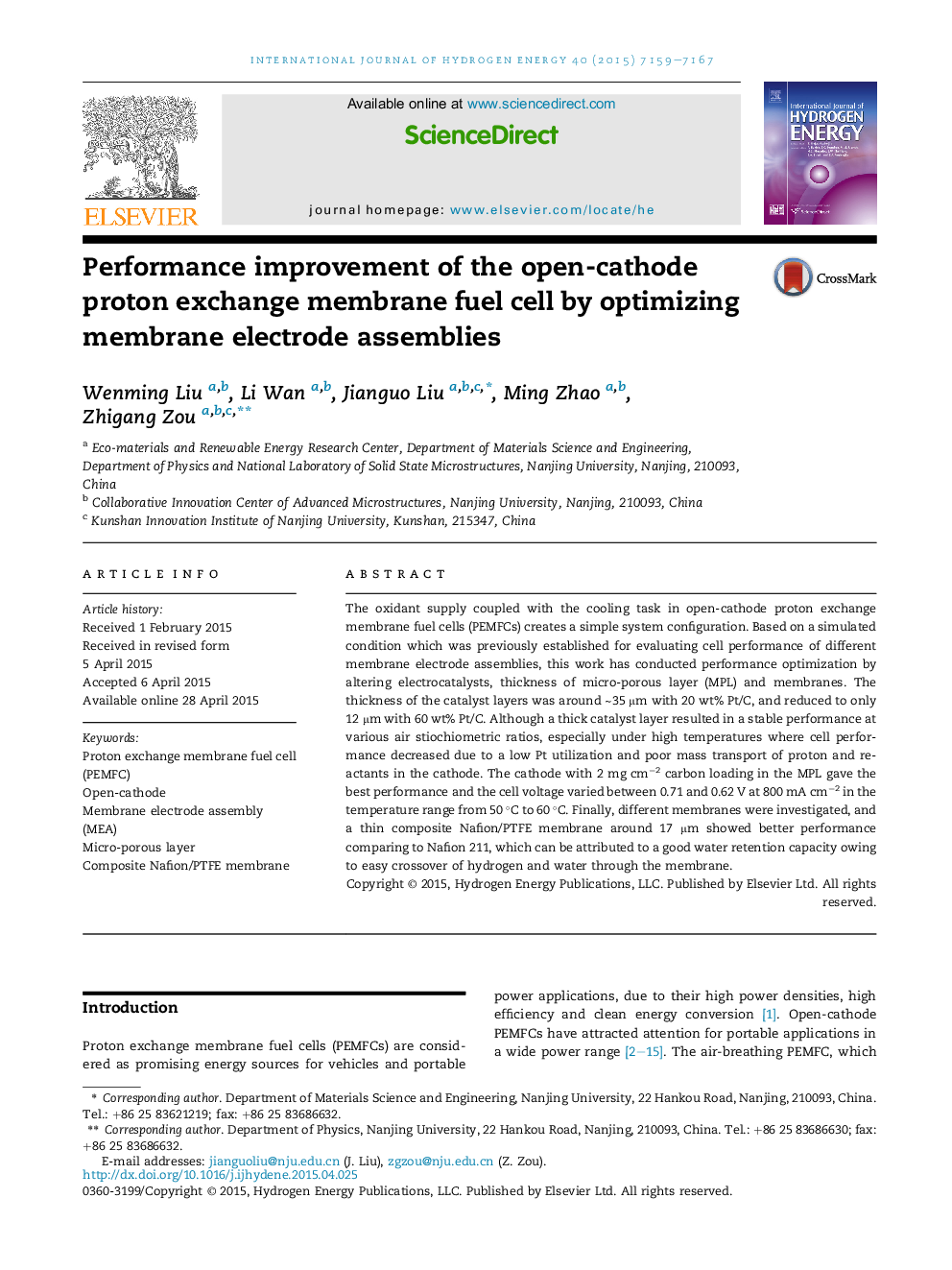| Article ID | Journal | Published Year | Pages | File Type |
|---|---|---|---|---|
| 1279899 | International Journal of Hydrogen Energy | 2015 | 9 Pages |
•The cell performance was optimized in a simulated condition for open-cathode PEMFCs.•A thick electrode helps to maintain water in a high temperature operation.•A best cell performance was obtained with a 17 μm-thick composite Nafion/PTFE membrane.•Performance improvement can be attributed to better water retention in the MEA.
The oxidant supply coupled with the cooling task in open-cathode proton exchange membrane fuel cells (PEMFCs) creates a simple system configuration. Based on a simulated condition which was previously established for evaluating cell performance of different membrane electrode assemblies, this work has conducted performance optimization by altering electrocatalysts, thickness of micro-porous layer (MPL) and membranes. The thickness of the catalyst layers was around ∼35 μm with 20 wt% Pt/C, and reduced to only 12 μm with 60 wt% Pt/C. Although a thick catalyst layer resulted in a stable performance at various air stiochiometric ratios, especially under high temperatures where cell performance decreased due to a low Pt utilization and poor mass transport of proton and reactants in the cathode. The cathode with 2 mg cm−2 carbon loading in the MPL gave the best performance and the cell voltage varied between 0.71 and 0.62 V at 800 mA cm−2 in the temperature range from 50 °C to 60 °C. Finally, different membranes were investigated, and a thin composite Nafion/PTFE membrane around 17 μm showed better performance comparing to Nafion 211, which can be attributed to a good water retention capacity owing to easy crossover of hydrogen and water through the membrane.
Graphical abstractFigure optionsDownload full-size imageDownload as PowerPoint slide
